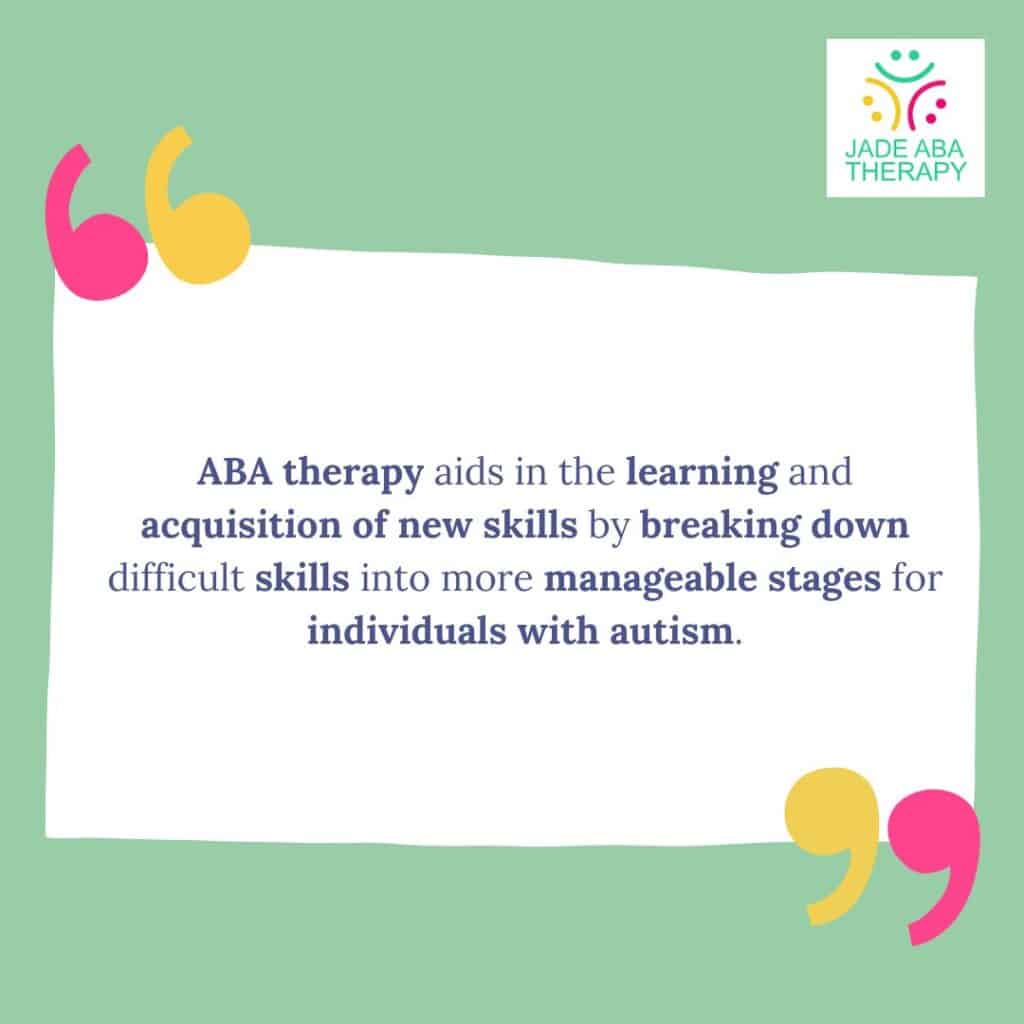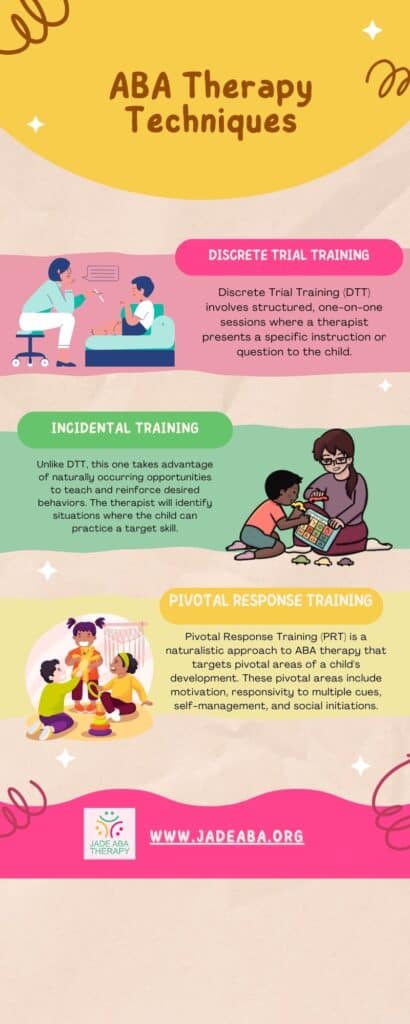When it comes to treating children with autism spectrum disorder (ASD) or other developmental conditions, many experts consider Applied Behavior Analysis (ABA) therapy to be the gold-standard treatment. It is a therapy designed to assist children in developing social and emotional skills through one-on-one sessions with a practitioner, focusing on interventions based on principles of learning theory.

Definition of ABA Therapy
ABA therapy is an established and evidence-based treatment approach that aims at strengthening socially significant habits for people with autism. It includes breaking down difficult behaviors into smaller, simpler elements and reinforcing desired behaviors with the help of behavior modification and positive reinforcement strategies.
The therapy is designed to address a wide range of skills, including communication, social interaction, academic abilities, self-care, and daily living skills. ABA therapy is tailored to meet the unique needs of each individual, employing strategies that are effective and appropriate for their age, developmental level, and specific goals.
Evolution of ABA Therapy
Over the years, ABA therapy has evolved and adapted to better serve individuals with autism. Initially, the therapy focused on reducing undesirable behaviors through the use of negative reinforcement. However, there were criticisms of this early approach, which involved aversive techniques.
Today, ABA therapy has shifted towards a more positive and person-centered approach. The emphasis is now on redirecting behavior and teaching new skills rather than solely eliminating undesirable behavior. ABA practitioners have made adjustments to the method, making it more flexible, respectful, and effective for each child’s capacity.
Benefits of ABA Therapy
ABA therapy has been recognized by many experts as the gold-standard treatment for children with ASD or other developmental conditions. Let’s explore the benefits of ABA therapy, including the improvements it can bring and the cost and duration considerations.

Improvements from ABA Therapy
According to studies, people with autism can make major progress when they receive intensive, long-term therapy based on ABA principles. These advancements cover a wide range of developmental domains, such as social functioning, language acquisition, everyday living skills, and intellectual functioning.
ABA therapy aids in the learning and acquisition of new skills by breaking down difficult skills into more manageable stages for individuals with autism. Individuals can improve their overall quality of life by developing social interaction skills, communication skills, and adaptive behaviors through regular and organized interventions.
It’s crucial to remember that different factors, including the patient’s age, the length and intensity of therapy, and the patient’s reaction to treatment, can affect how well ABA therapy works. Nonetheless, many patients experience notable improvements within a few months of starting treatment.
Cost and Duration of ABA Therapy
The cost of ABA therapy can vary depending on factors such as location, the qualifications of the therapist, and the intensity of the therapy. On average, ABA therapy can cost around $120 per hour when provided by a board-certified ABA therapist. Usually, one week will include 10 hours, resulting in a weekly cost of $1,200.
The duration of ABA therapy can also vary based on individual needs. Treatment plans are often tailored to the requirements of each individual, considering factors such as developmental level and the severity of challenges. ABA therapy may last up to three years, although it’s important to note that progress can be seen within a few months.
In recent years, telehealth ABA therapy has emerged as a potentially cost-effective alternative to traditional in-person therapy. By utilizing computer-based platforms and video conferencing, individuals can receive ABA therapy remotely. This approach has the potential to reduce costs associated with transportation.
Implementing ABA Therapy
When it comes to implementing ABA therapy for individuals with autism, there are different approaches that can be taken. Two common methods of delivering ABA therapy are in-home ABA therapy and telehealth ABA therapy.
In-Home ABA Therapy
In-home ABA therapy allows for a more personalized and tailored approach to treatment. The therapist can work closely with the child and their family to create a customized treatment plan that targets specific goals and addresses the unique challenges the child may be facing.
Telehealth ABA Therapy
Recent advancements in technology have made telehealth ABA therapy a viable option. It involves using video conferencing technology to provide therapy sessions remotely. This approach can be particularly beneficial for individuals who may have limited access to in-person therapy services.
Principles of ABA Therapy
To understand the foundation of ABA therapy, it is essential to explore its underlying principles. It utilizes evidence-based techniques to promote positive behaviors and decrease challenging behaviors in individuals with autism. Two key principles of ABA therapy are positive reinforcement and behavior modification techniques.
Positive Reinforcement
One of the main components of ABA therapy is positive reinforcement. This idea entails giving people incentives or rewards for displaying desired behaviors. When good behaviors are rewarded, like finishing tasks or accomplishing goals, people with autism are inspired and motivated to carry out those actions over time.
The use of positive reinforcement helps individuals associate certain actions with positive outcomes, making it more likely for them to repeat those actions. Rewards can vary depending on the individual’s preferences. By focusing on positive reinforcement, ABA therapy creates an environment that fosters learning and growth.
Behavior Modification Techniques
Behavior modification techniques are another key component of ABA therapy. These techniques aim to help individuals with autism make connections between socially acceptable and unacceptable behaviors. By identifying antecedents and consequences, behavior modification techniques can effectively shape and modify behaviors.
ABA Therapy Techniques
ABA therapy also employs various techniques to modify behavior and teach new skills to children with autism. Three commonly used techniques in ABA therapy are Discrete Trial Training, Incidental Training, and Pivotal Response Training.

Discrete Trial Training
Discrete Trial Training (DTT) involves structured, one-on-one sessions where a therapist presents a specific instruction or question to the child. The child is then prompted to respond, and the therapist provides reinforcement for correct responses. By breaking down complex skills into simpler components, it helps individuals with autism learn and generalize new behaviors more effectively.
Incidental Training
Incidental Training is another technique used in ABA therapy that focuses on teaching skills in natural, everyday settings. Unlike DTT, this one takes advantage of naturally occurring opportunities to teach and reinforce desired behaviors. The therapist will identify situations where the child can practice a target skill. They then provide prompts and reinforcement to encourage the desired behavior.
Pivotal Response Training
Pivotal Response Training (PRT) is a naturalistic approach to ABA therapy that targets pivotal areas of a child’s development. These pivotal areas include motivation, responsivity to multiple cues, self-management, and social initiations. PRT aims to improve motivation and self-initiation by using child-preferred activities and reinforcing attempts at communication and social interaction.
Modern Approaches in ABA Therapy
Today, ABA therapists focus more on redirecting behavior rather than solely eliminating undesirable behavior. Modern ABA therapy also emphasizes the importance of building a positive and trusting relationship between the therapist and the individual with autism. This person-centered approach recognizes the unique strengths and challenges of each individual and tailors the therapy accordingly.
Furthermore, there has been a shift towards incorporating more naturalistic interventions into ABA therapy. This approach aims to teach functional skills within the individual’s natural environment, making the therapy more relevant to their everyday life. By integrating therapy into daily routines and activities, individuals with autism can generalize their skills and apply them in various contexts.In conclusion, while ABA therapy has faced historical criticisms, practitioners have made important adaptations to address these concerns. The focus has shifted towards a more flexible and person-centered approach, emphasizing positive reinforcement, understanding the underlying causes of behavior, and incorporating naturalistic interventions that support the development of individuals with autism.
Sources: